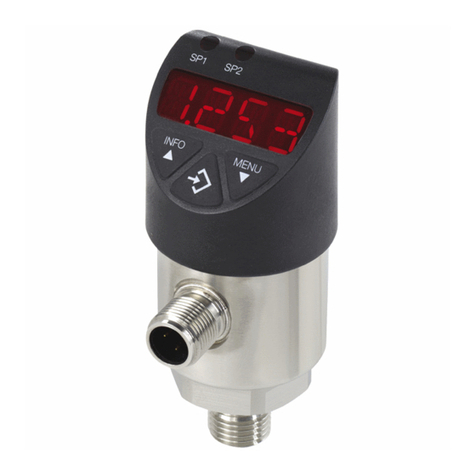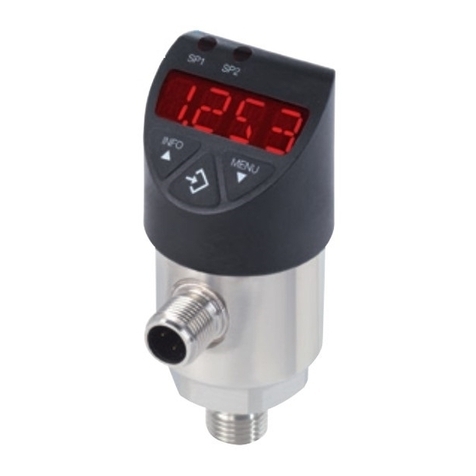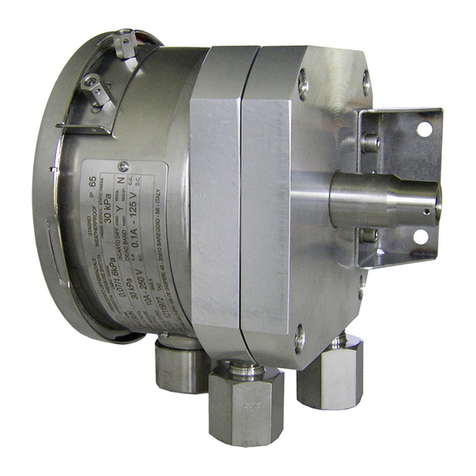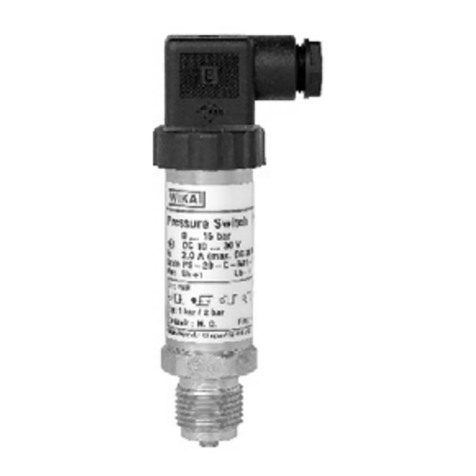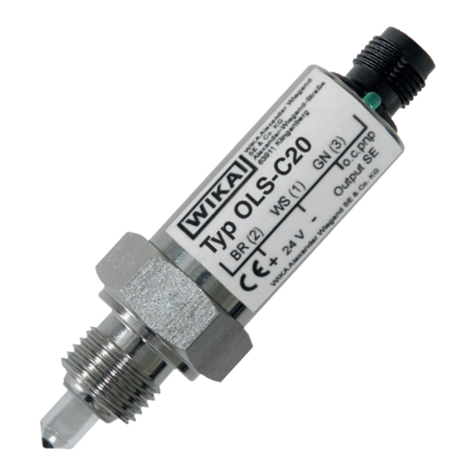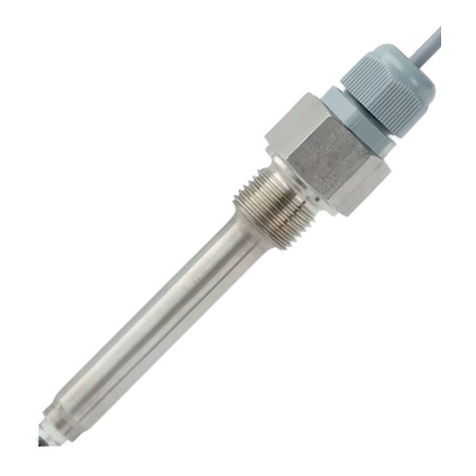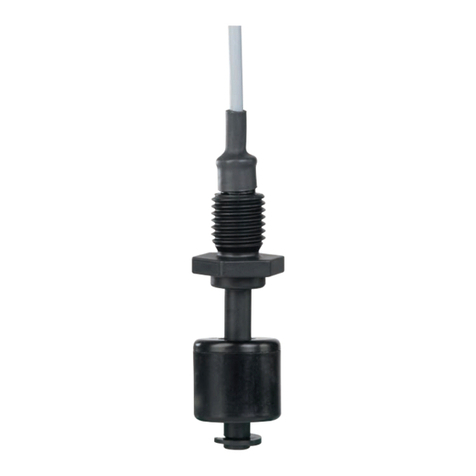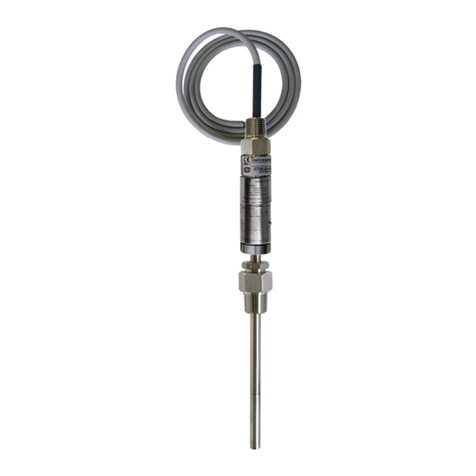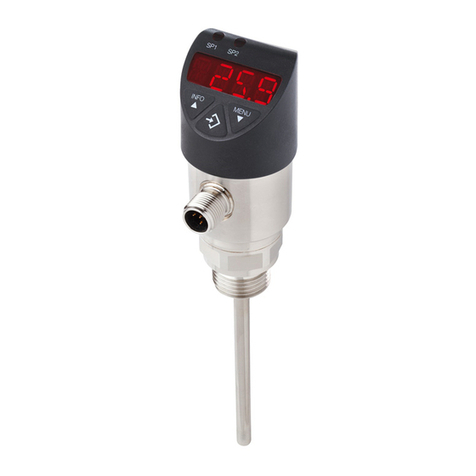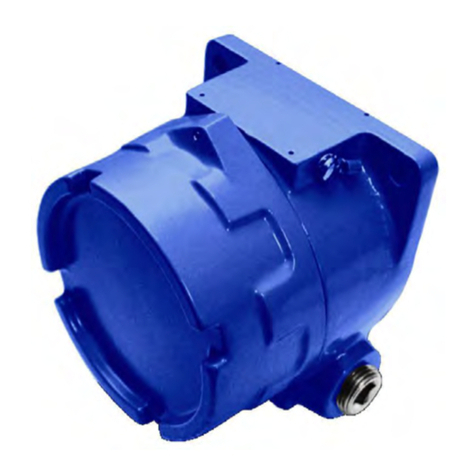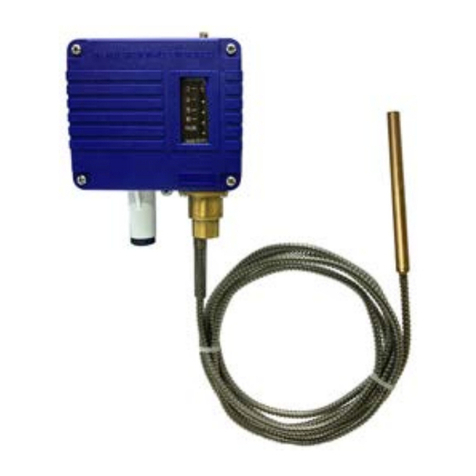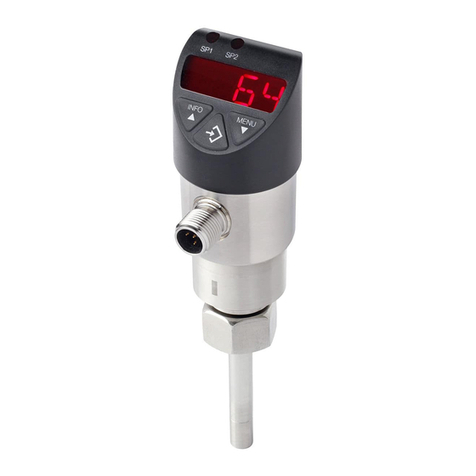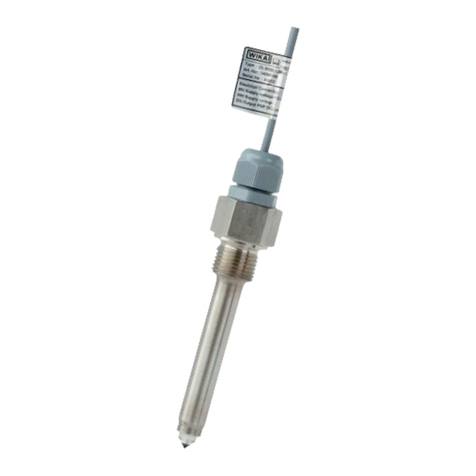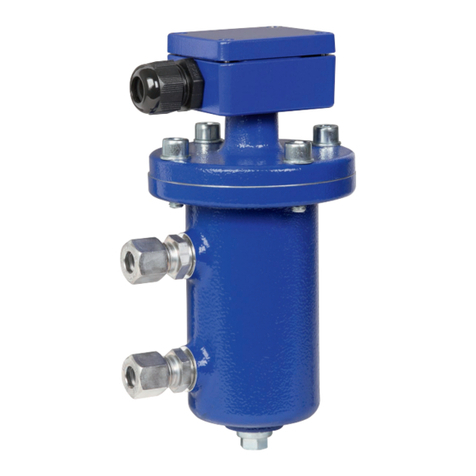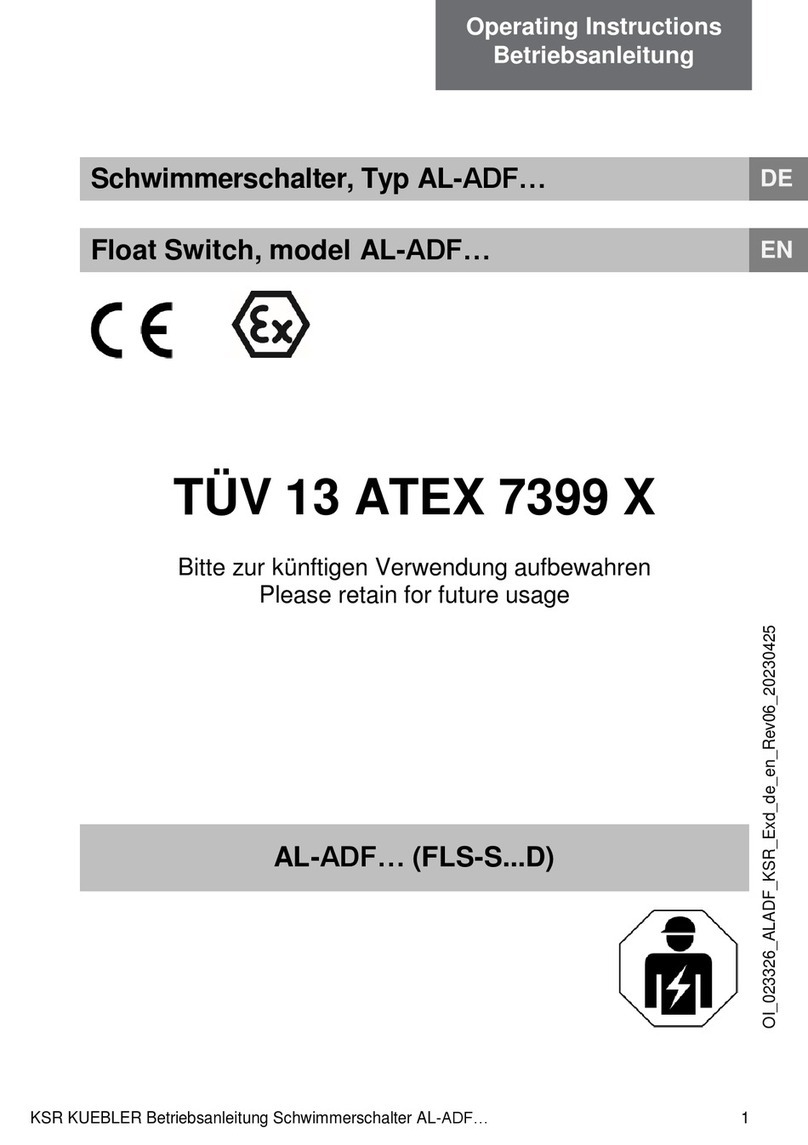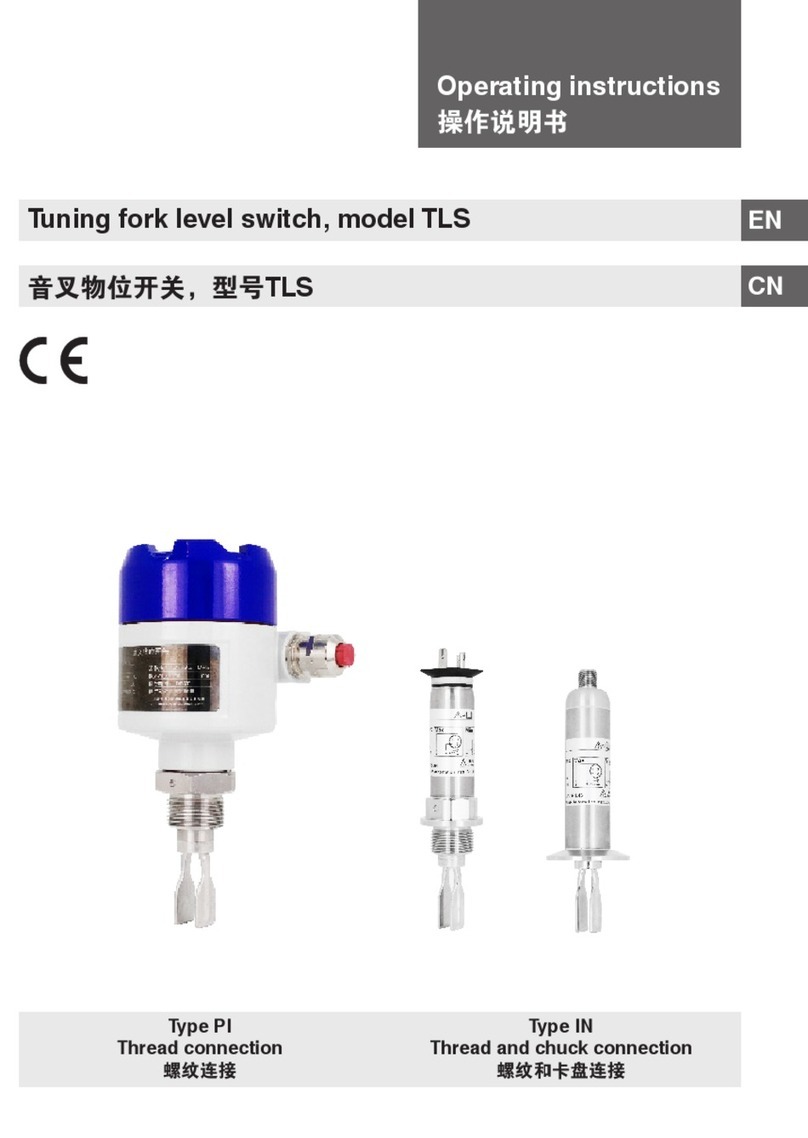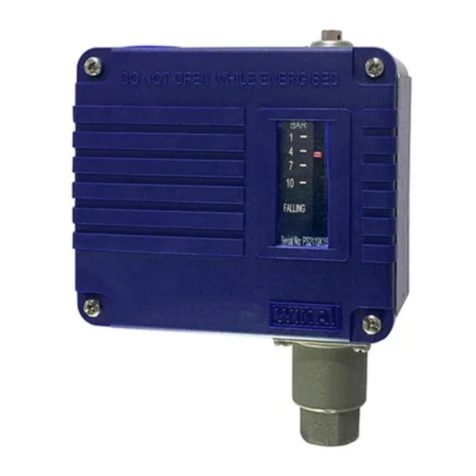
7
WIKA operating instructions, flow switch, model FSM-6100
83790004.00 12/2020 EN
Faults Causes Measures
Switching
status remains
unchanged
despite reaching
the switch point/
reset point.
Error with switch
point setting.
Carry out switch point setting with
matching test assembly, see chapter 5.5.
Contacts defective
(e.g. fused contact
zone).
Replace instrument. Before
recommissioning the new instrument,
provide a protective circuit for the contact.
Flow port blocked. Replace instrument
Leakage Carry out a leak test. Seal the process
connection or replace the instrument.
For the exchange of the instrument chapters 8 “Dismounting, return and disposal”
and 5 “Commissioning, operation” must be observed.
7. Maintenance and cleaning
7.1 Maintenance
The instruments are maintenance-free. The switch point setting must be checked after
3 months. Carry out switch point setting with matching test assembly, see chapter 5.5.
Repairs must only be carried out by the manufacturer.
7.2 Cleaning
WARNING!
Risk of burns
With cleaning there is a risk through hot surface.
▶ Before cleaning the instrument, allow it to cool sufficiently or use protective
equipment.
CAUTION!
Physical injuries and damage to property and the environment
Improper cleaning may lead to physical injuries and damage to property and
the environment. Residual media in the dismounted instrument can result in a
risk to persons, the environment and equipment.
▶ Carry out the cleaning process as described below.
1. Before cleaning, correctly disconnect the instrument from the flow system and
switch the load circuit off.
2. Use the requisite protective equipment.
3. Clean the instrument with a moist cloth.
Electrical connections must not come into contact with moisture!
CAUTION!
Damage to the instrument
Improper cleaning may lead to damage to the instrument!
▶ Do not use any aggressive cleaning agents.
▶ Do not use any hard or pointed objects for cleaning.
4. Wash or clean the dismounted instrument, in order to protect persons and the
environment from exposure to residual media.
8. Dismounting, return and disposal
WARNING!
Physical injuries and damage to property and the environment through
residual media
Residual media in the dismounted instrument can result in a risk to persons,
the environment and equipment.
▶ Observe the information in the material safety data sheet for the
corresponding medium.
▶ Wash or clean the dismounted instrument, in order to protect persons and
the environment from exposure to residual media.
8.1 Dismounting
WARNING!
Risk of burns
During dismounting there is a risk of dangerously hot media escaping.
▶ Let the instrument cool down sufficiently before dismounting it!
DANGER!
Danger to life caused by electric current
Upon contact with live parts, there is a direct danger to life.
▶ The dismounting of the instrument may only be carried out by skilled personnel.
▶ Remove the instrument once the system has been isolated from power
sources.
WARNING!
Physical injury
When dismounting, there is a danger from aggressive media and high pressures.
▶ Observe the information in the material safety data sheet for the
corresponding medium.
▶ Dismount the instrument when there is no flow.
8.2 Return
Strictly observe the following when shipping the instrument:
All instruments delivered to WIKA must be free from any kind of hazardous substances
(acids, bases, solutions, etc.) and must therefore be cleaned before being returned.
WARNING!
Physical injuries and damage to property and the environment through
residual media
Residual media in the dismounted instrument can result in a risk to persons,
the environment and equipment.
▶ With hazardous substances, include the material safety data sheet for the
corresponding medium.
▶ Clean the instrument, see chapter 7.2 “Cleaning”.
When returning the instrument, use the original packaging or a suitable transport packaging.
8.3 Disposal
Incorrect disposal can put the environment at risk.
Dispose of instrument components and packaging materials in an environmentally
compatible way and in accordance with the country-specific waste disposal regulations.
